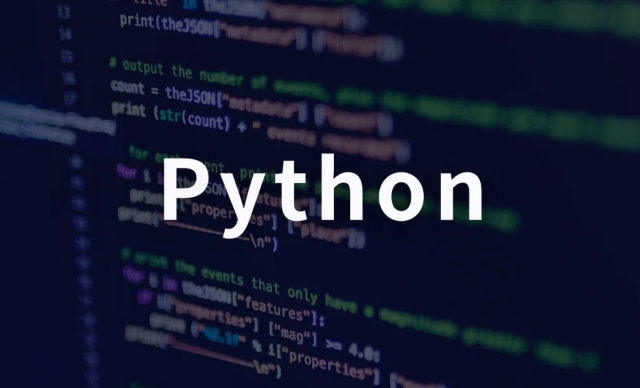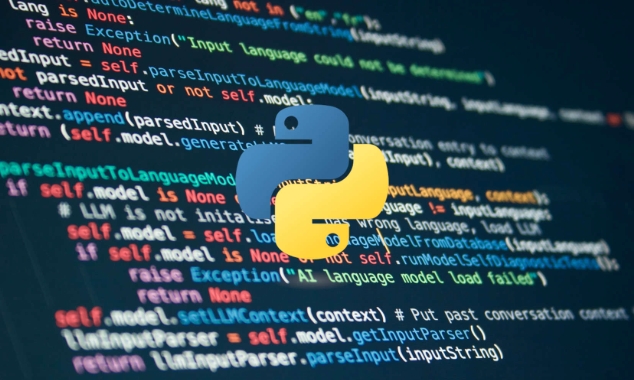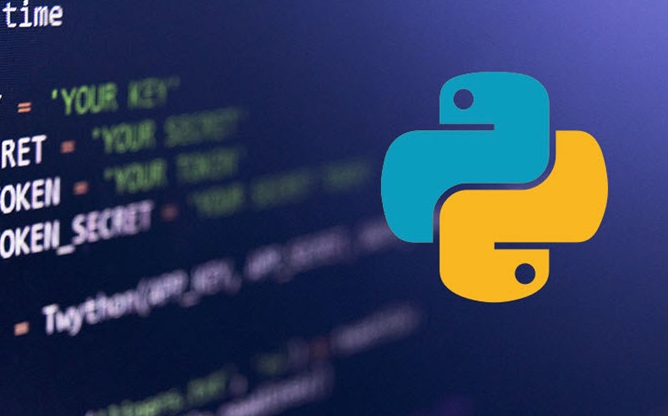How to scrape a website that requires a login with Python
Jul 10, 2025 pm 01:36 PMTo scrape a website that requires login using Python, simulate the login process and maintain the session. First, understand how the login works by inspecting the login flow in your browser's Developer Tools, noting the login URL, required parameters, and any tokens or redirects involved. Second, use requests.Session() to persist cookies across requests, sending a POST request with the correct login credentials and using the session object to access protected pages afterward. Third, handle dynamic logins—such as JavaScript-heavy sites—with tools like Selenium or Playwright for UI automation, which can also extract cookies post-login for further scraping. Fourth, avoid getting blocked or locked out by adding delays between requests, rotating user agents, avoiding brute-force attempts, respecting terms of service, and securely managing credentials via environment variables instead of hardcoding them.

If you want to scrape a website that requires login using Python, the key is to simulate the login process and maintain the session. Unlike public pages, logged-in content is protected by authentication, so you can’t just use requests.get(url) and expect to see the real data. You need to handle cookies or tokens properly.

Here’s how to approach it step by step.
1. Understand How the Login Works
Before writing any code, inspect the login flow in your browser:

- Open Developer Tools (F12), go to the Network tab.
- Try logging in manually and look for the request made to the login endpoint (
POSTusually). - Check the Form Data or Request Payload — this tells you what parameters are needed (like username, password, maybe CSRF token).
- Also check if there's a redirect after login or if tokens are involved (common with modern apps).
This gives you all the info you need to replicate the login in your script.
2. Use requests.Session() to Keep Cookies
Once you know the login URL and required data, use a session object to persist cookies across requests:

import requests
session = requests.Session()
login_data = {
'username': 'your_username',
'password': 'your_password'
}
login_url = 'https://example.com/login'
session.post(login_url, data=login_data)After this, session will carry the authenticated cookies, and you can use it to access protected pages:
profile_page = session.get('https://example.com/dashboard')
print(profile_page.text) # Should show the actual logged-in contentSome sites may require additional fields like
csrf_token, which you’ll have to extract from the login page HTML first using tools like BeautifulSoup or lxml.
3. Handle Dynamic Logins (e.g., JavaScript-heavy Sites)
If the site uses JavaScript heavily or has complex authentication (like OAuth, JWT tokens), requests might not be enough. In such cases:
- Use Selenium or Playwright to control a real browser.
- These tools can log in via UI automation and then retrieve the final page content or cookies.
Example with Selenium:
from selenium import webdriver
driver = webdriver.Chrome()
driver.get('https://example.com/login')
# Find and fill login form
driver.find_element('name', 'username').send_keys('your_username')
driver.find_element('name', 'password').send_keys('your_password')
driver.find_element('xpath', '//button[@type="submit"]').click()
# After login, get cookies
cookies = driver.get_cookies()
# Now use these cookies with requests or continue scraping via SeleniumKeep in mind: browser automation is slower and heavier than requests.
4. Avoid Getting Blocked or Locked Out
When scraping authenticated pages:
- Don't send too many requests in a short time — add delays with
time.sleep(). - Rotate user agents or use headers similar to real browsers.
- Be cautious with brute-force attempts — some sites lock accounts after multiple failed logins.
- Respect terms of service — scraping may be against the rules.
Also, never hardcode credentials in your scripts publicly — use environment variables or config files.
So to recap:
- Simulate login using
Session()and correct POST data. - Handle dynamic logins with browser automation if needed.
- Always keep sessions alive and mimic real user behavior.
That’s basically it — not rocket science, but easy to mess up if you skip the prep work.
The above is the detailed content of How to scrape a website that requires a login with Python. For more information, please follow other related articles on the PHP Chinese website!

Hot AI Tools

Undress AI Tool
Undress images for free

Undresser.AI Undress
AI-powered app for creating realistic nude photos

AI Clothes Remover
Online AI tool for removing clothes from photos.

Clothoff.io
AI clothes remover

Video Face Swap
Swap faces in any video effortlessly with our completely free AI face swap tool!

Hot Article

Hot Tools

Notepad++7.3.1
Easy-to-use and free code editor

SublimeText3 Chinese version
Chinese version, very easy to use

Zend Studio 13.0.1
Powerful PHP integrated development environment

Dreamweaver CS6
Visual web development tools

SublimeText3 Mac version
God-level code editing software (SublimeText3)

Hot Topics
 How do you connect to a database in Python?
Jul 10, 2025 pm 01:44 PM
How do you connect to a database in Python?
Jul 10, 2025 pm 01:44 PM
ToconnecttoadatabaseinPython,usetheappropriatelibraryforthedatabasetype.1.ForSQLite,usesqlite3withconnect()andmanagewithcursorandcommit.2.ForMySQL,installmysql-connector-pythonandprovidecredentialsinconnect().3.ForPostgreSQL,installpsycopg2andconfigu
 Python def vs lambda deep dive
Jul 10, 2025 pm 01:45 PM
Python def vs lambda deep dive
Jul 10, 2025 pm 01:45 PM
def is suitable for complex functions, supports multiple lines, document strings and nesting; lambda is suitable for simple anonymous functions and is often used in scenarios where functions are passed by parameters. The situation of selecting def: ① The function body has multiple lines; ② Document description is required; ③ Called multiple places. When choosing a lambda: ① One-time use; ② No name or document required; ③ Simple logic. Note that lambda delay binding variables may throw errors and do not support default parameters, generators, or asynchronous. In actual applications, flexibly choose according to needs and give priority to clarity.
 How to call parent class init in Python?
Jul 10, 2025 pm 01:00 PM
How to call parent class init in Python?
Jul 10, 2025 pm 01:00 PM
In Python, there are two main ways to call the __init__ method of the parent class. 1. Use the super() function, which is a modern and recommended method that makes the code clearer and automatically follows the method parsing order (MRO), such as super().__init__(name). 2. Directly call the __init__ method of the parent class, such as Parent.__init__(self,name), which is useful when you need to have full control or process old code, but will not automatically follow MRO. In multiple inheritance cases, super() should always be used consistently to ensure the correct initialization order and behavior.
 How to continue a for loop in Python
Jul 10, 2025 pm 12:22 PM
How to continue a for loop in Python
Jul 10, 2025 pm 12:22 PM
In Python's for loop, use the continue statement to skip some operations in the current loop and enter the next loop. When the program executes to continue, the current loop will be immediately ended, the subsequent code will be skipped, and the next loop will be started. For example, scenarios such as excluding specific values ??when traversing the numeric range, skipping invalid entries when data cleaning, and skipping situations that do not meet the conditions in advance to make the main logic clearer. 1. Skip specific values: For example, exclude items that do not need to be processed when traversing the list; 2. Data cleaning: Skip exceptions or invalid data when reading external data; 3. Conditional judgment pre-order: filter non-target data in advance to improve code readability. Notes include: continue only affects the current loop layer and will not
 How to parse an HTML table with Python and Pandas
Jul 10, 2025 pm 01:39 PM
How to parse an HTML table with Python and Pandas
Jul 10, 2025 pm 01:39 PM
Yes, you can parse HTML tables using Python and Pandas. First, use the pandas.read_html() function to extract the table, which can parse HTML elements in a web page or string into a DataFrame list; then, if the table has no clear column title, it can be fixed by specifying the header parameters or manually setting the .columns attribute; for complex pages, you can combine the requests library to obtain HTML content or use BeautifulSoup to locate specific tables; pay attention to common pitfalls such as JavaScript rendering, encoding problems, and multi-table recognition.
 Access nested JSON object in Python
Jul 11, 2025 am 02:36 AM
Access nested JSON object in Python
Jul 11, 2025 am 02:36 AM
The way to access nested JSON objects in Python is to first clarify the structure and then index layer by layer. First, confirm the hierarchical relationship of JSON, such as a dictionary nested dictionary or list; then use dictionary keys and list index to access layer by layer, such as data "details"["zip"] to obtain zip encoding, data "details"[0] to obtain the first hobby; to avoid KeyError and IndexError, the default value can be set by the .get() method, or the encapsulation function safe_get can be used to achieve secure access; for complex structures, recursively search or use third-party libraries such as jmespath to handle.
 How to handle API authentication in Python
Jul 13, 2025 am 02:22 AM
How to handle API authentication in Python
Jul 13, 2025 am 02:22 AM
The key to dealing with API authentication is to understand and use the authentication method correctly. 1. APIKey is the simplest authentication method, usually placed in the request header or URL parameters; 2. BasicAuth uses username and password for Base64 encoding transmission, which is suitable for internal systems; 3. OAuth2 needs to obtain the token first through client_id and client_secret, and then bring the BearerToken in the request header; 4. In order to deal with the token expiration, the token management class can be encapsulated and automatically refreshed the token; in short, selecting the appropriate method according to the document and safely storing the key information is the key.
 How to scrape a website that requires a login with Python
Jul 10, 2025 pm 01:36 PM
How to scrape a website that requires a login with Python
Jul 10, 2025 pm 01:36 PM
ToscrapeawebsitethatrequiresloginusingPython,simulatetheloginprocessandmaintainthesession.First,understandhowtheloginworksbyinspectingtheloginflowinyourbrowser'sDeveloperTools,notingtheloginURL,requiredparameters,andanytokensorredirectsinvolved.Secon






